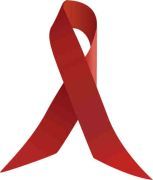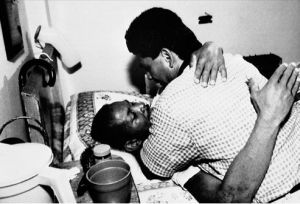
|
Philippines, 24 Dec 2025 |
Home >> News >> Columns >> Rene Bonsubre, Jr. |
 |
||||
|
|
|
|
HIV AND BOXING PhilBoxing.com Sat, 01 Dec 2012  December 1 is World AIDS Day. For the past twenty-four years, this day has been marked by concerned individuals and organizations as an occasion to raise public awareness about the continuing spread of the Human Immunodeficiency Virus or HIV and to remember those who have died from this dreaded disease. From 2011 to 2015, World AIDS Day will have the theme of "Getting to zero: zero new HIV infections. Zero discrimination. Zero AIDS related deaths". While surfing for new data to add to what has become my first of December ritual ? writing on HIV and the fight game, I came across a very interesting article from Malawi posted last April. ?Mandatory HIV test in offing for boxing? by Tiwonge Ng'ona talks about mandatory HIV testing for boxers introduced last year in their country and is in the process of being enforced. The article states that ?The National Professional Boxing Committee (NPBC) officially announced the requirement that any professional boxer should go for the HIV mandatory test with effect from the 1st June last year. Almost a year has passed since the enforcement of this requirement but revelations show that Malawian boxers are still at risk of infecting each other due to some existing loopholes in the testing process which government says need to be sealed. According to NPBC, boxers have to undergo an HIV test two to three weeks before getting into the ring, a situation HIV experts say is likely to mislead the boxing world.? There is such a thing as a window period ? an interval of three weeks to six months ? between HIV infection and the development of detectable antibodies. During the window period, an HIV infected person can transmit the virus to others although their infection may not be detectable with an antibody test. In the Philippines, anyone who pays attention to the news knows that number of reported HIV/AIDS cases have been increasing. According to an INFOGRAPHIC: The state of HIV/AIDS in the Philippines posted on the website gmanetwork.com, data from the Department of Health shows that the number of new cases of HIV being reported in the Philippines is steadily on the rise. The first recorded case of HIV/AIDS in the Philippines was in 1984. Between 1984 and 2012, there were 10,242 new cases in the Philippines as of July 2012. 1878 new cases of HIV have been reported to the DOH this year; which mean more than half of all the reported cases of HIV in the Philippines have been reported only for the last three years. The reason why I am very concerned is that for two years, I lived in Tanzania as a medical volunteer treating AIDS patients. I am familiar with the situation in Sub-Saharan Africa; I know what it?s like to live in a place where there in high HIV prevalence. The Philippines may still have a low prevalence but this could be the reason why many of us lower our guard. We in the medical profession wonder how many HIV positive cases go unreported. I can only hope that the powers that be in the Philippines responsible for making policy regarding the testing of athletes in contact sports like boxing and MMA will re-examine and re-evaluate their testing requirements and protocols. Below is a very famous photo of two former world champions ? Roberto Duran and a bedridden Esteban De Jesus, who passed away in 1989. 
De Jes?s contracted HIV while serving his life-term prison sentence from a murder conviction in 1981. He was pardoned when it became known that he was suffering from AIDS. De Jesus was visited by his old nemesis Duran, who hugged and kissed him. Duran's gesture was one of great compassion towards the man who gave him his first loss. And to think this happened during the time when medical scientists were still grappling with the right drug combinations to halt the progression of the illness and when the world feared AIDS as a death sentence. Esteban de Jes?s of Puerto Rico, was a former world lightweight champion who engaged Duran in a compelling trilogy. He was the first boxer to defeat the Panamanian great Roberto Dur?n as a pro in 1972 by ten round unanimous decision in Madison Square Garden. He was stopped by Duran in 11 rounds in 1974 in a WBA lightweight title bout and was stopped again in 12 rounds in 1978 in a WBA/WBC In a title unification bout in Las Vegas. Today, people living with HIV are living longer and AIDS-related deaths are on the decline due to the lifesaving effects of antiretroviral therapy. HIV is passed through sexual contact; through contact with blood or other body fluids (in drug addicts who share contaminated IV needles); intrapartum or perinatally from an HIV positive mother to infant. So, as a friendly reminder - abstinence is the absolute way of avoiding sexual transmission of HIV. In cases where you have to do it, please practice safe sex by using condoms. Having only one sexual partner and being loyal to him or her is also an excellent way to avoid HIV. Knowing the sexual history of your partner also helps. Intravenous drug users should avoid sharing needles. Health workers are reminded to use gloves when in contact with body fluids. Education is the best tool to fight the spread of HIV. Read about it and talk about it with your friends. If for any reason you feel you need to get tested, do not hesitate to consult a physician. Be safe. Click here for a complete listing of columns by this author. Click here for a complete listing of this author's articles from different news sources. |
|
|
PhilBoxing.com has been created to support every aspiring Filipino boxer and the Philippine boxing scene in general. Please send comments to feedback@philboxing.com |
PRIVATE POLICY | LEGAL DISCLAIMER
developed and maintained by dong secuya © 2025 philboxing.com. |